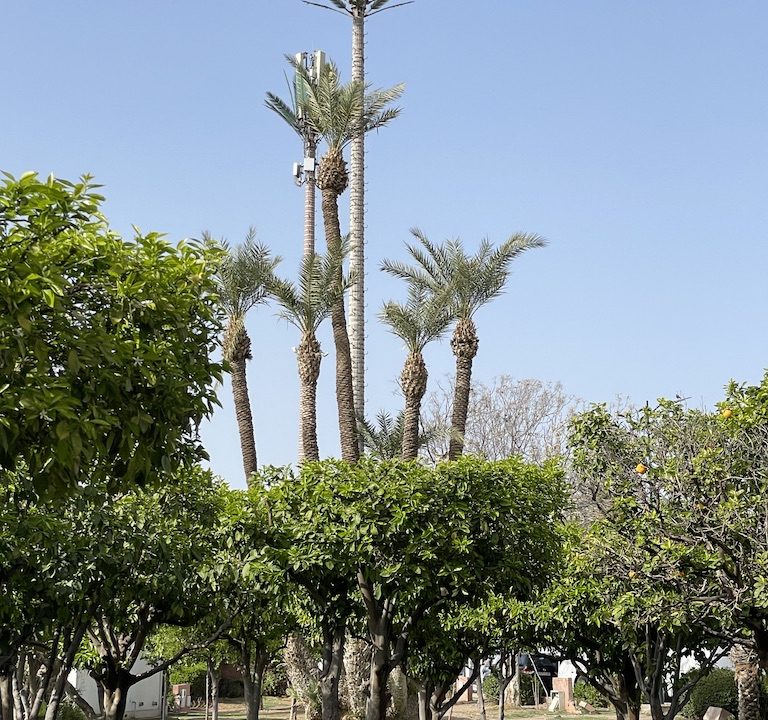Our resident gardening expert Alison Agnew has been out and about garden visiting. Sit back and enjoy as she takes us to sunny climes.
Now is the best time to visit many of our amazing Cornish gardens. Caerhays, Trebah, Glendurgan, Tregrehan, Anthony, Trewidden, Trewithen and Trengwainton are all strutting their stuff at the moment. I haven’t yet managed to get out to see any of them and hope that the strong winds we’ve been having haven’t spoiled the magnolias.
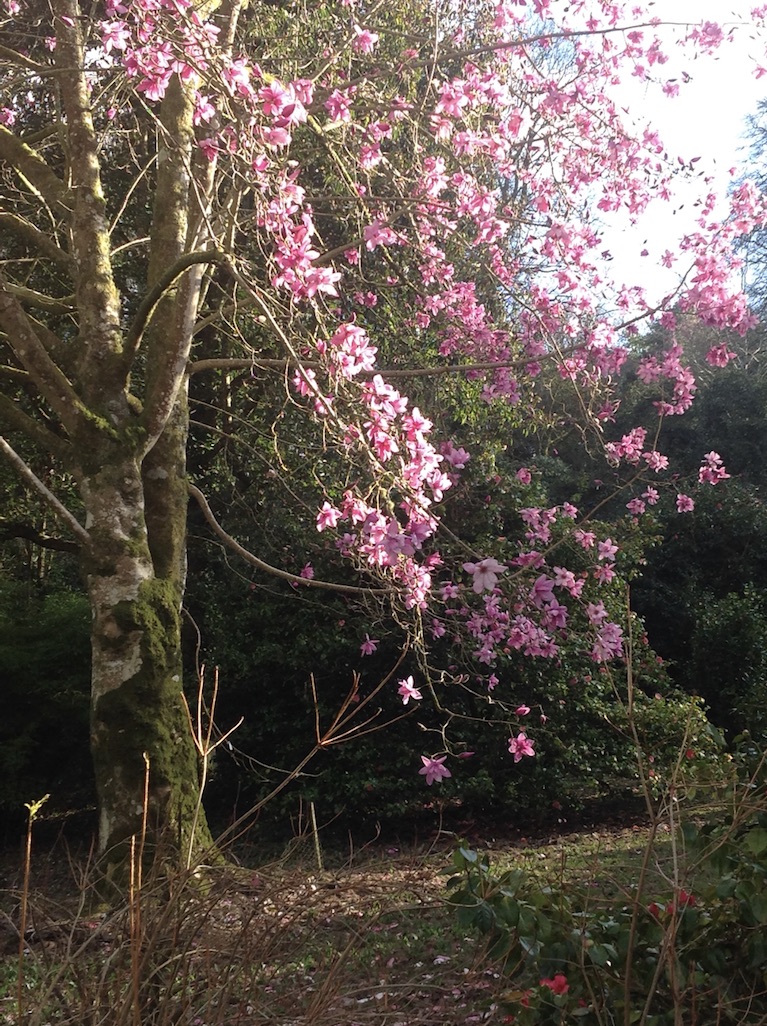
I have been to visit the gardens of my Alma Mater – Tremough in Penryn – for the first time in 53 years. Hugely altered by the building of the Exeter University campus, it was hard to remember exactly what was there and what has been lost. The great Lime Avenue is still there, its enormous, grandly ragged trees are thought to be contemporary with the 1704 house.
Much of the world-famous collection of Rhododendron has been lost though. Even 50 years ago many of the trees were on their last legs, most planted in the late 1800’s at the height of Far East plant hunting. Much of the source plants were sent as seed from Kew collected by Joseph Hooker. The head gardener, Richard Gill, cultivated many species and generated a great number of hybrids. The current gardeners are working hard to regenerate what is left and identify all the unknown varieties. They would welcome a visit from anyone with specialist knowledge.
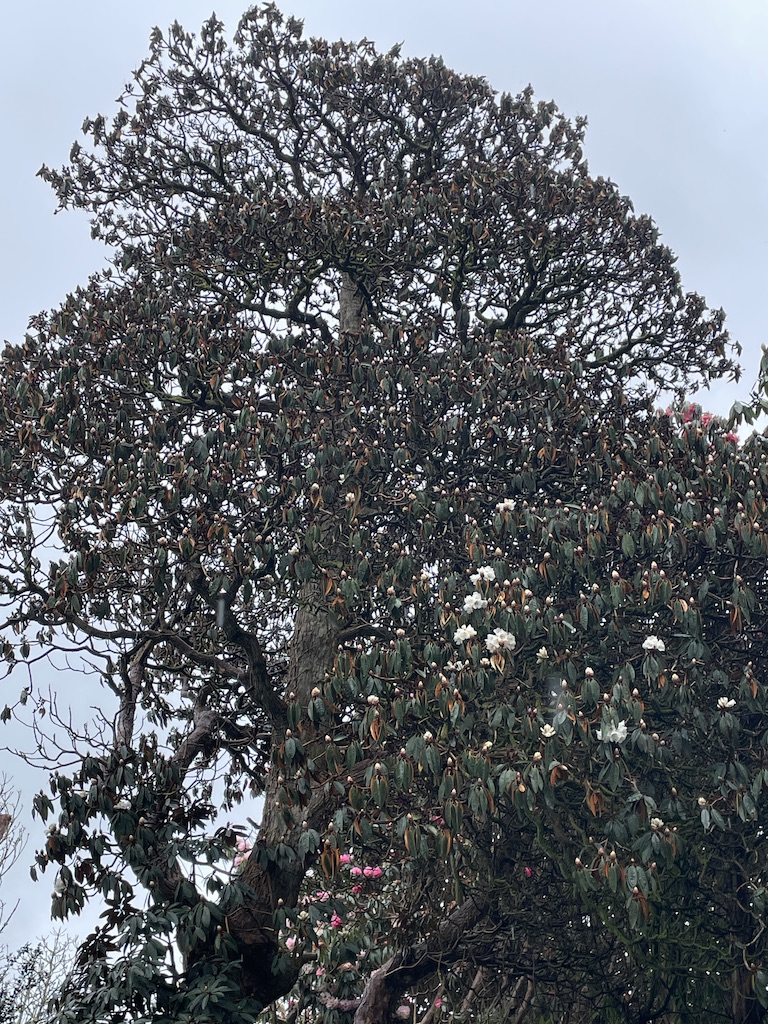
I recently had a brief holiday in Marrakech – the exposure to intense sunlight, colour, noise and exotic scents was a great antidote to the grey skies of this Cornish winter. Most of the gardens there have such a formal (and formulaic) structure that they strike an extreme contrast to our naturalistic Cornish gardens. Another contrast is that traditional Islamic gardens, even though primarily recreational, are planted with food plants – olives, date palms, citrus and pomegranates and few, if any, plants that are purely ornamental.
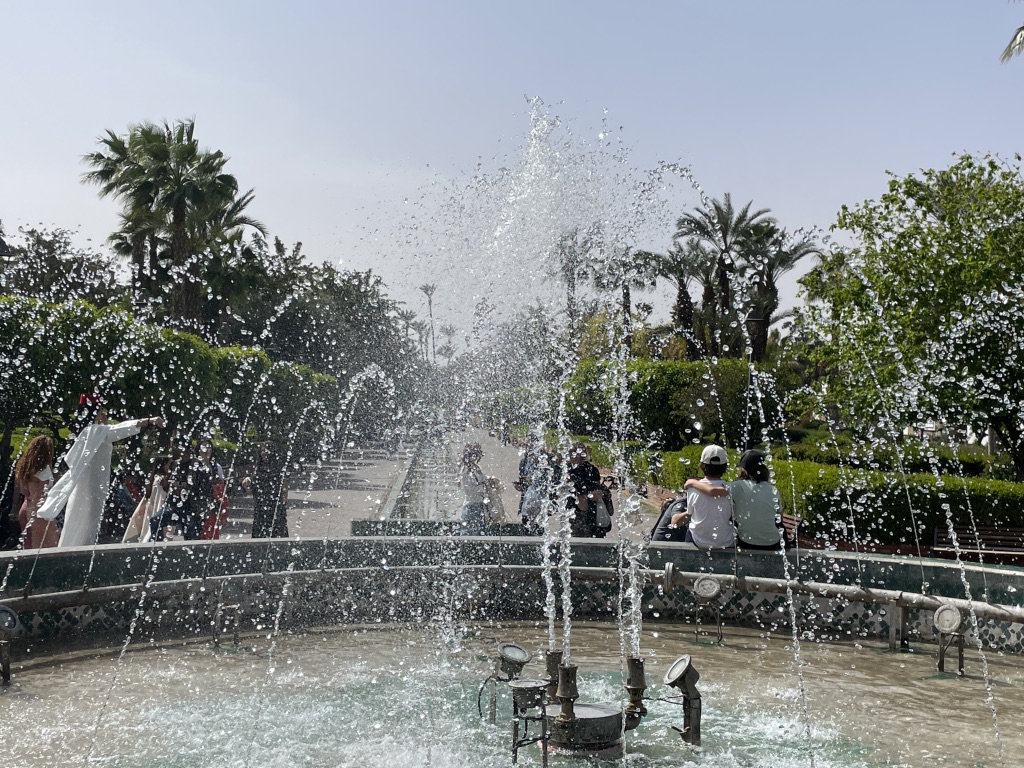
Even the tiny courtyard gardens inside the smaller riads had mostly food plants.
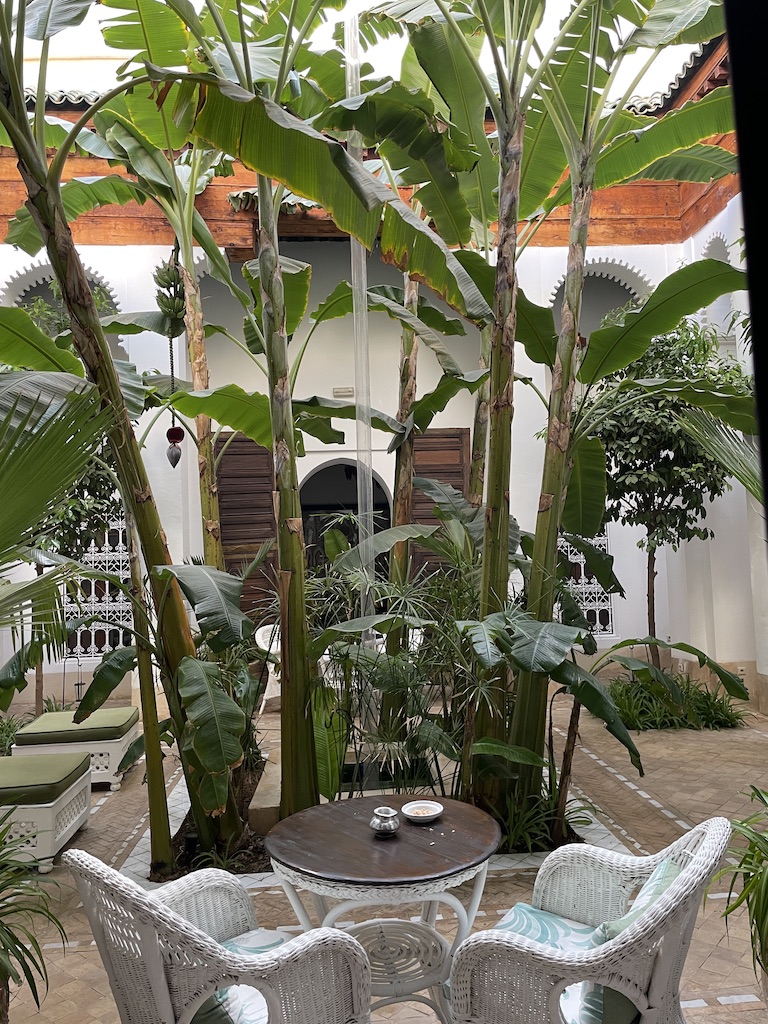
Typically Islamic gardens are divided into quadrants (charbagh) by paved paths, sometimes with rills and almost always with a basin of water at the crossover point.
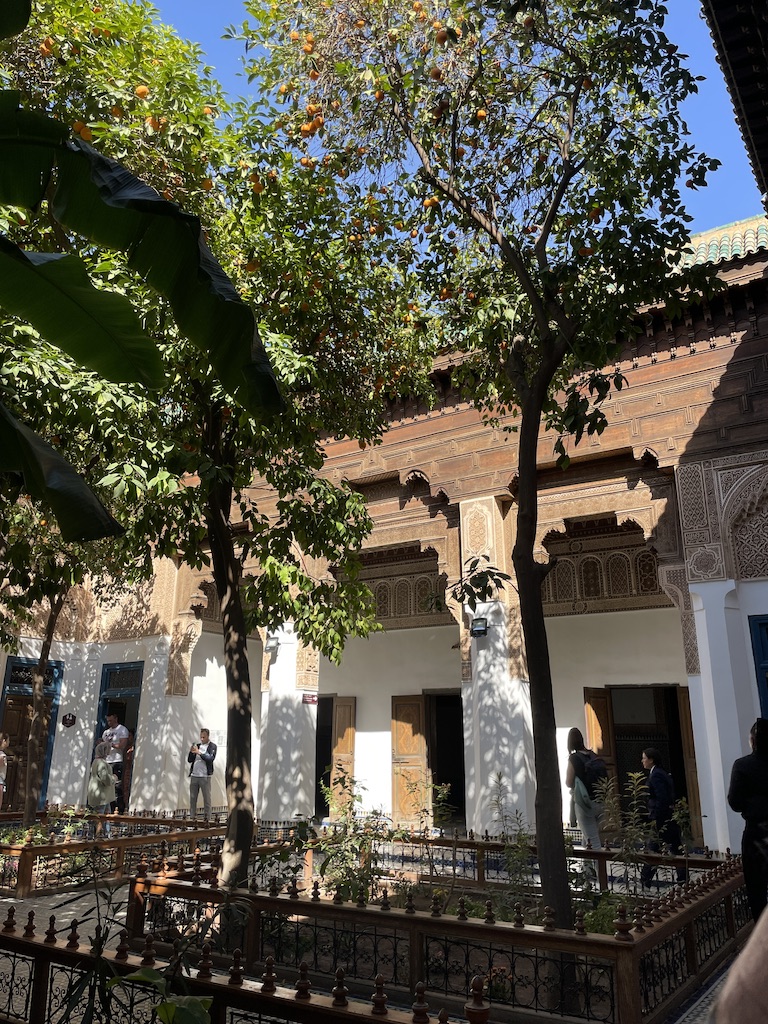
Water is a key component of Islamic gardens everywhere. In the desert city that is Marrakech, the water has to travel all the way from the Atlas Mountains so water used so profligately must also be quite a status symbol. Water features range from large open tanks in the Badi Palace, fountains and a canal in the Koutoubia gardens, rills and basins in Le Garden Secret.
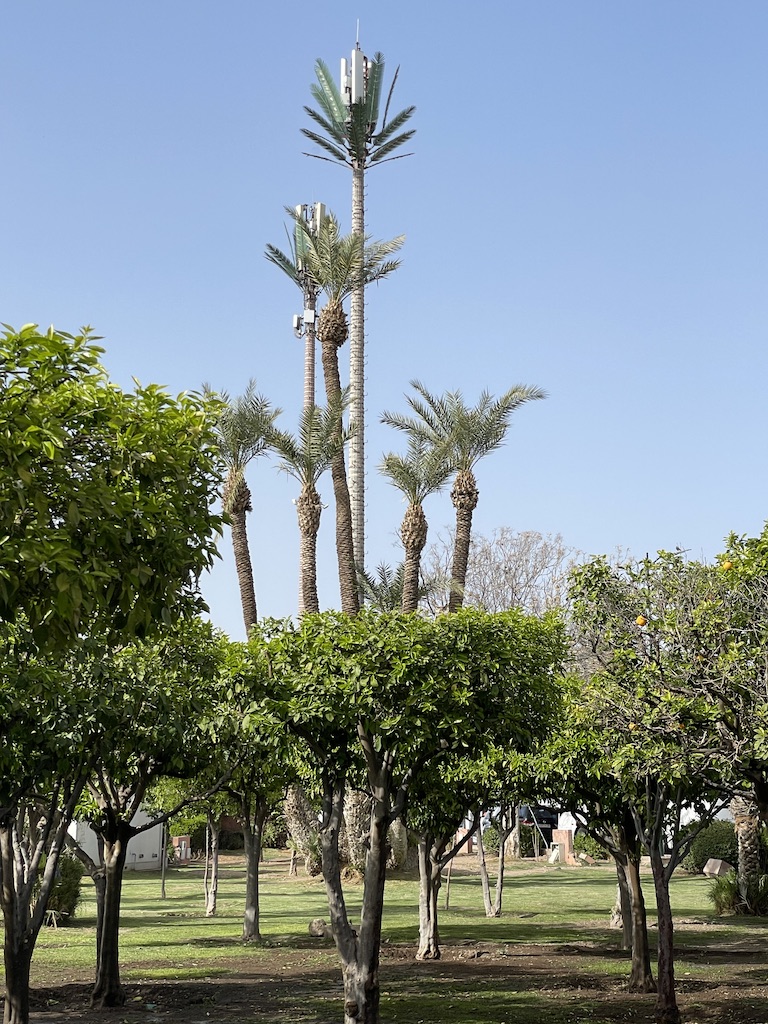
The other two key components of Islamic gardens are shade and scent and both were overwhelmingly provided by the orange and lemon trees – in full flower at this time of the year.
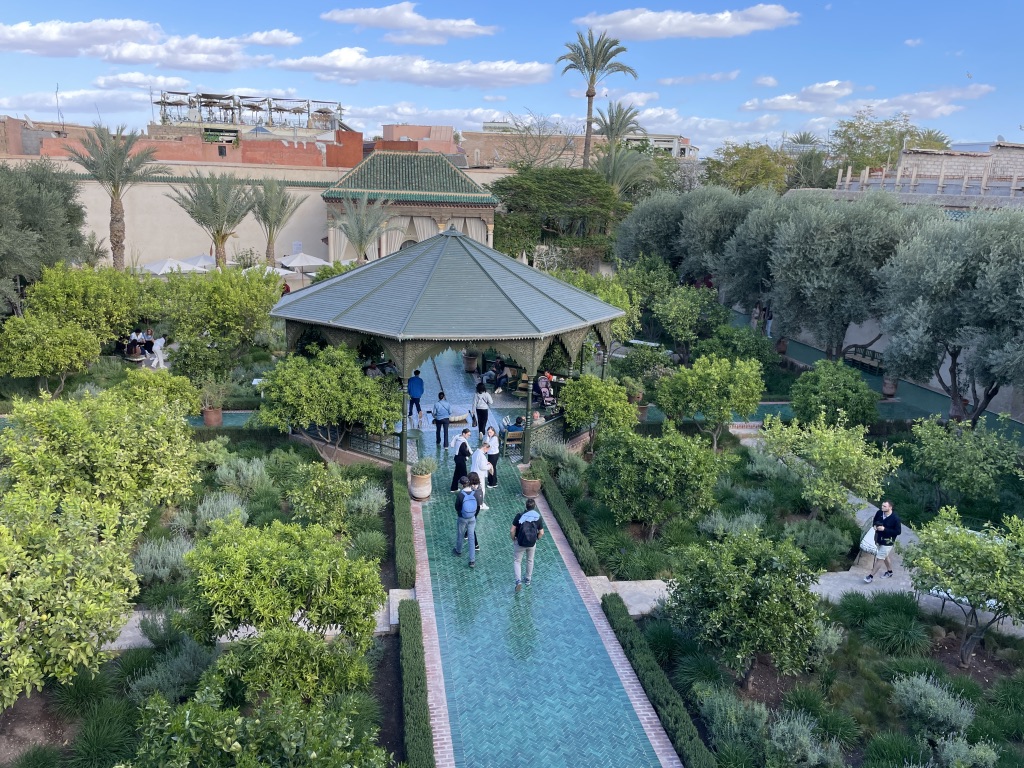
I love Islamic gardens but the two gardens I found most interesting have been influenced by Europeans. Le Jardin Secret is a recent restoration of a 16th Century Islamic garden that had fallen into disrepair since the 1930s. It has two parts joined at a corner. One part is typically Islamic – formed of four parts with a central shade canopy, water rills and basin. The planting is more varied than usual with ornamentals planted among the orange and olive trees.
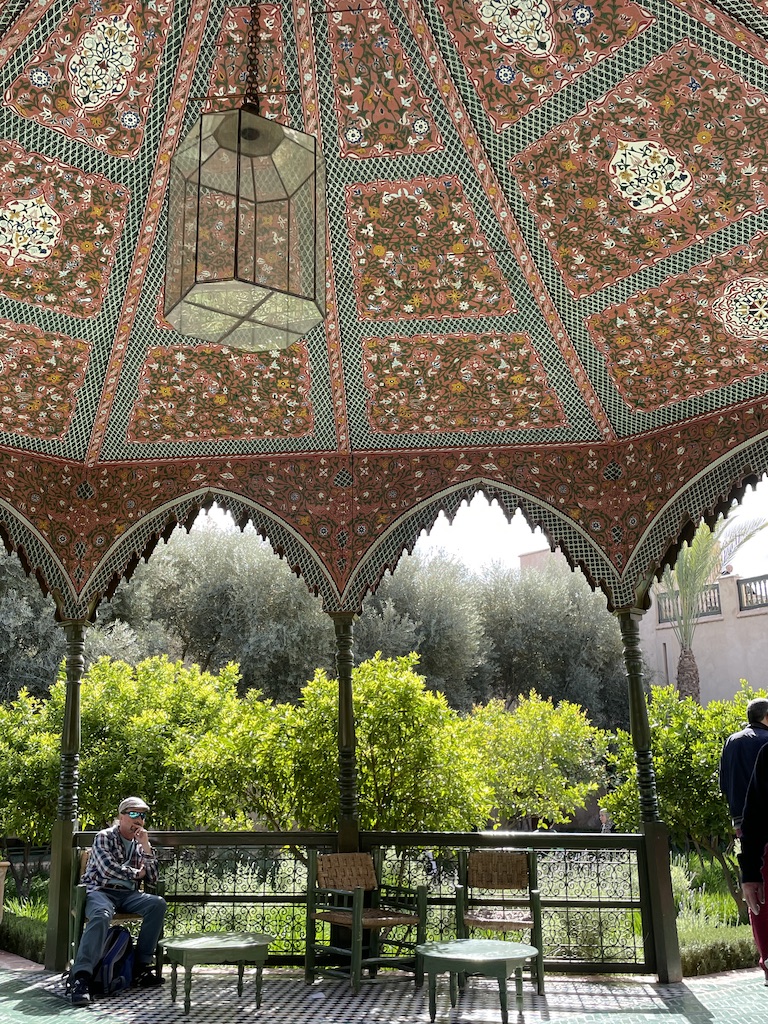
The other section is still quite formal in structure but planted informally with a wide range of exotic ornamental plants. We Cornish gardeners should recognise many of the South African imports but there were some fantastic trees – unknown to me anyway. A British designer, Tom Stuart-Smith was responsible for the planting of both.
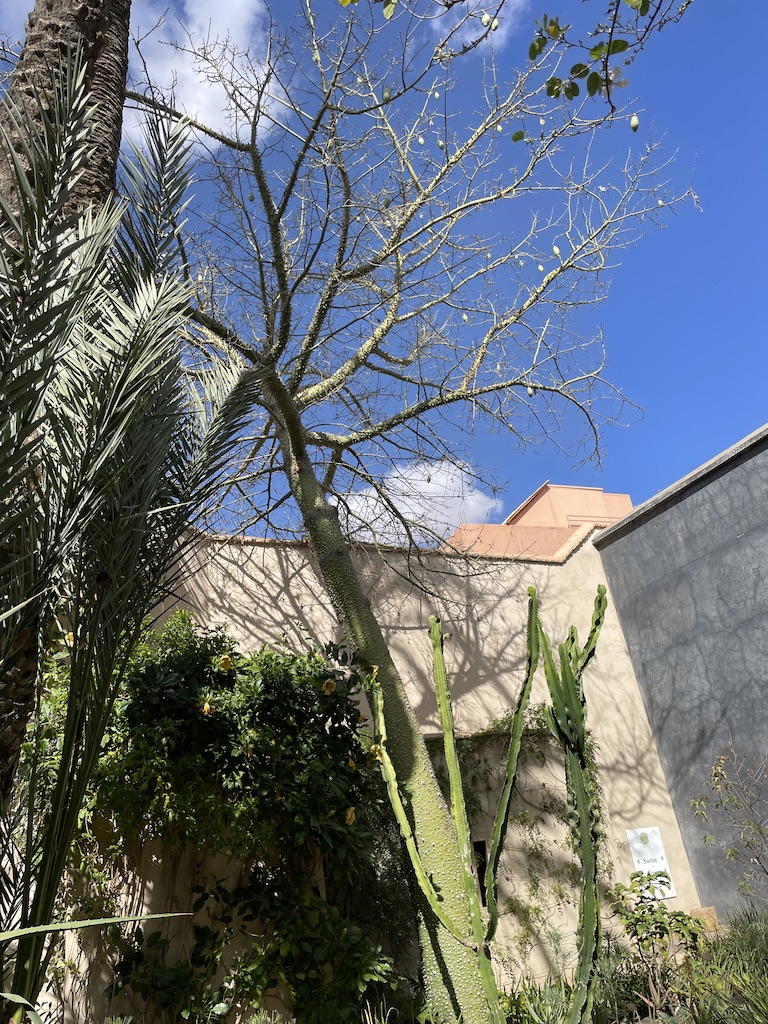
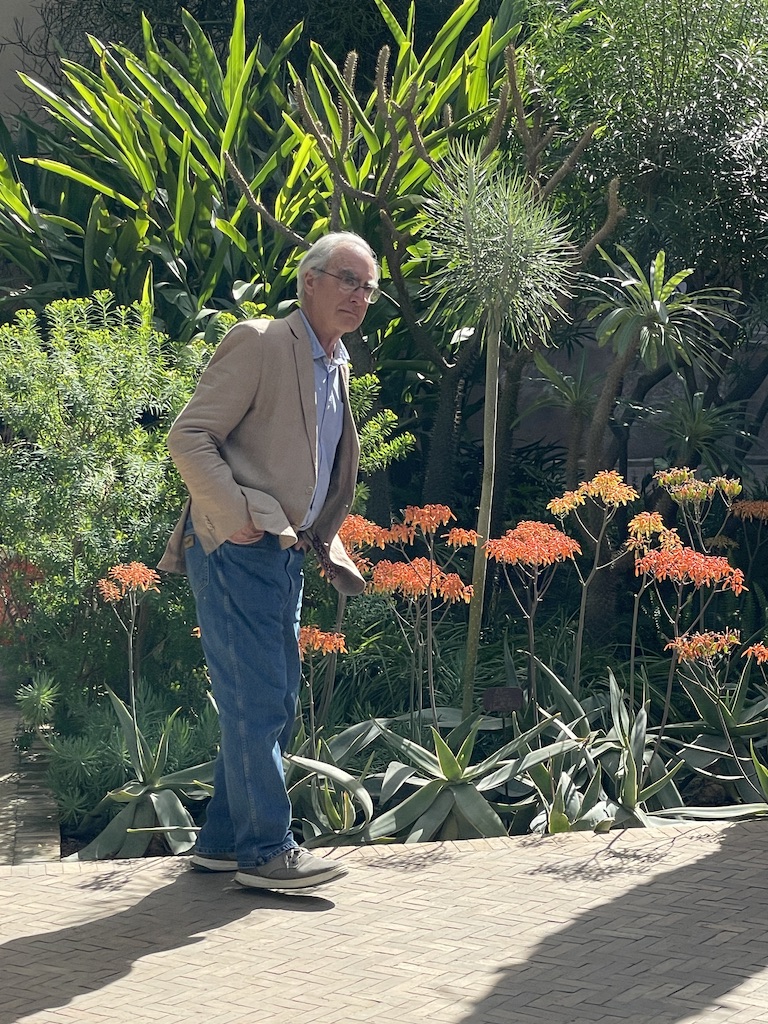
The Jardin Majorelle was created by a French painter, Jacques Majorelle in the last century and rescued from neglect and demolition by Yves St Laurent. It is hard to describe the style – its a kind of botanical garden – planted with over 300 species sourced from 5 continents. These are framed by art deco buildings, walls paths and furniture painted in vibrant cobalt, turquoise, and eye-popping yellow and red.
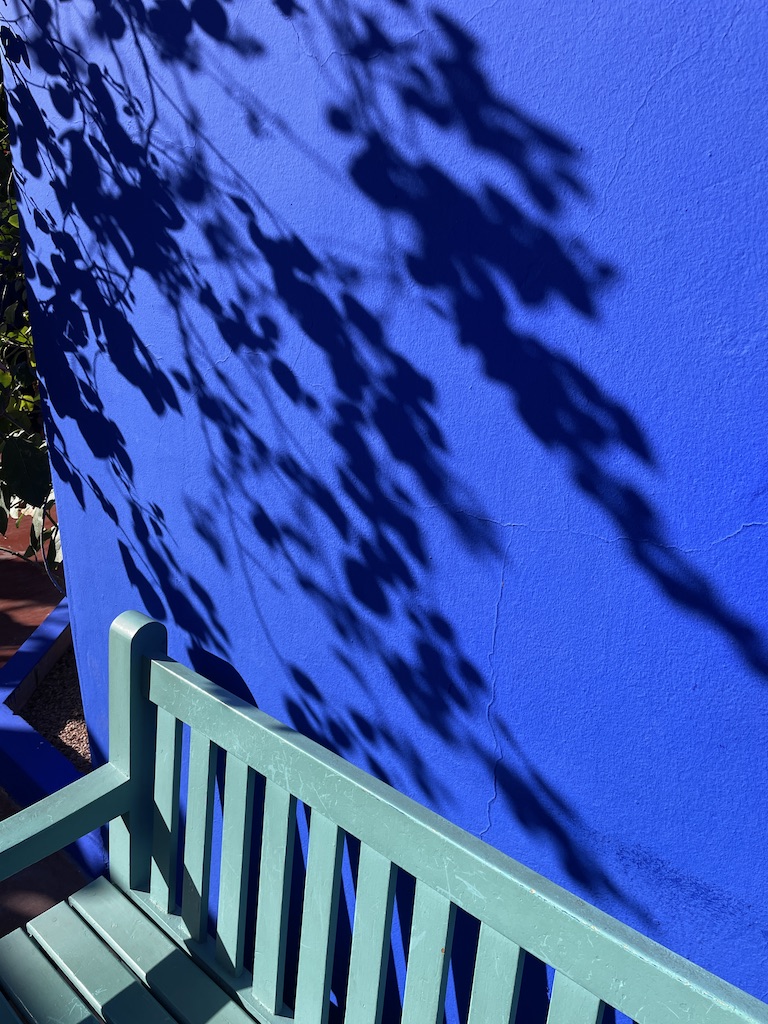
The plantings are vaguely arranged with concentrations of palms and cacti but overall it looks more like a collection of specimens in a museum than any garden I have ever seen. The pink gravel overlying the soil throughout the garden is kept pristine (raked flat and not a single fallen leaf) which adds to the exhibition feel of the place. I left, blown away by the place but unsure whether I liked it.
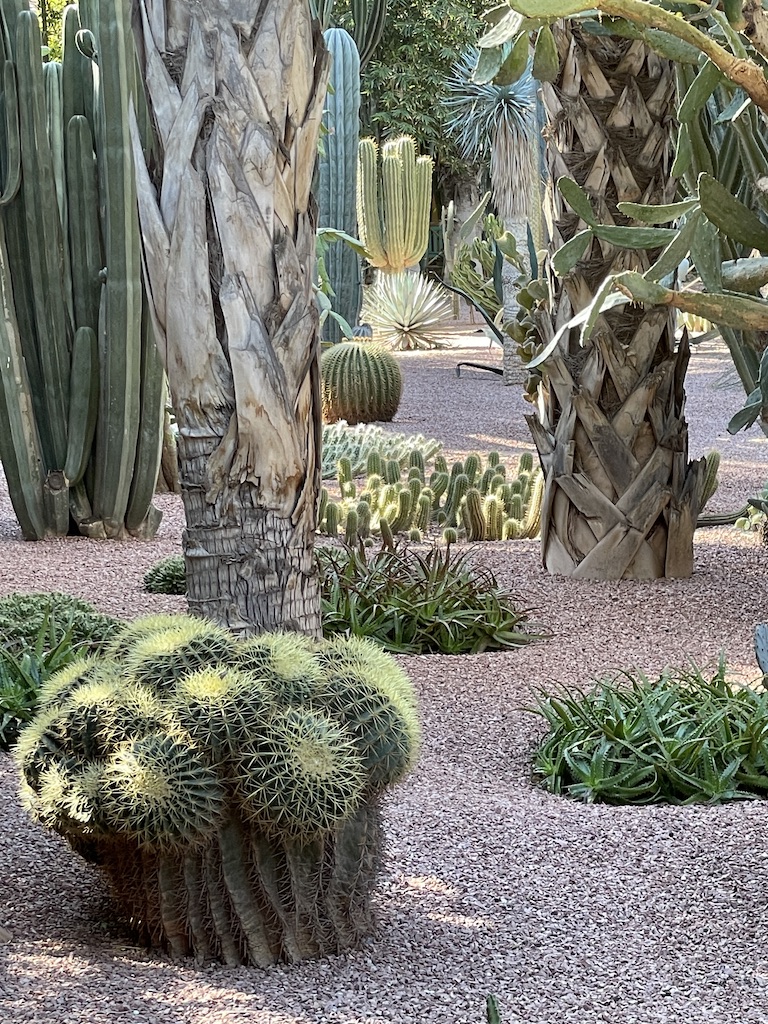
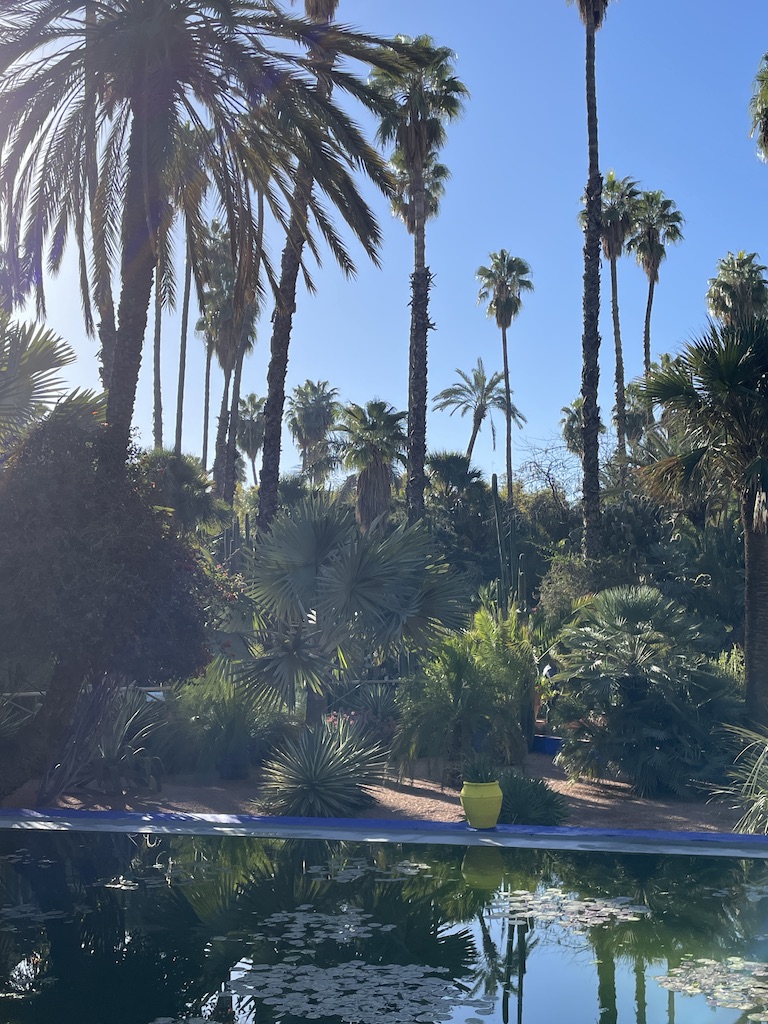
Driving back into Cornwall from Bristol airport, the hawthorns were starting to green up. I have a very poor memory so only the first few lines of Philip Larkin’s famous spring poem have stuck but they have been constantly murmuring in my head.
‘The trees are coming into leaf.
Like something almost being said;
The recent buds relax and spread,
Their greenness is a kind of grief.’ If you don’t know it, please read it.

